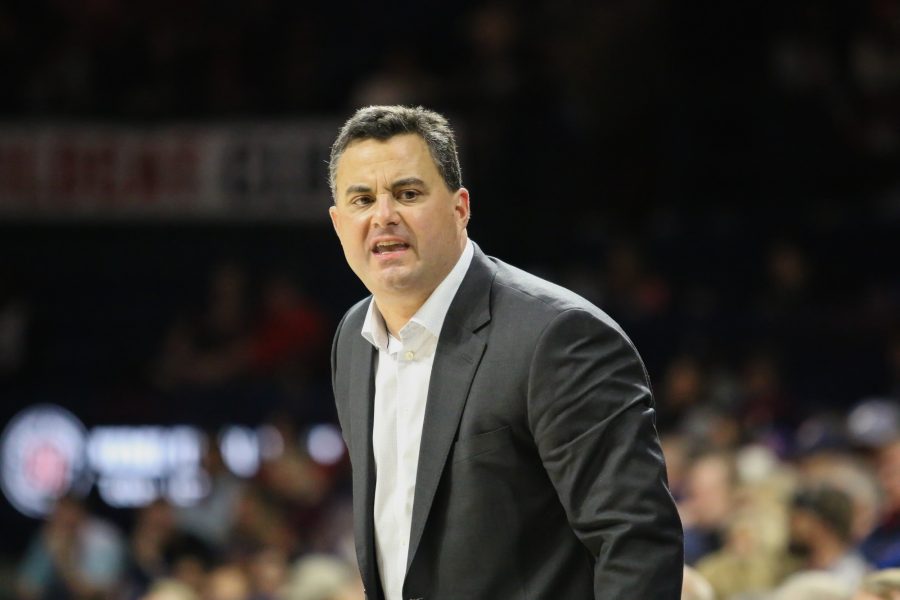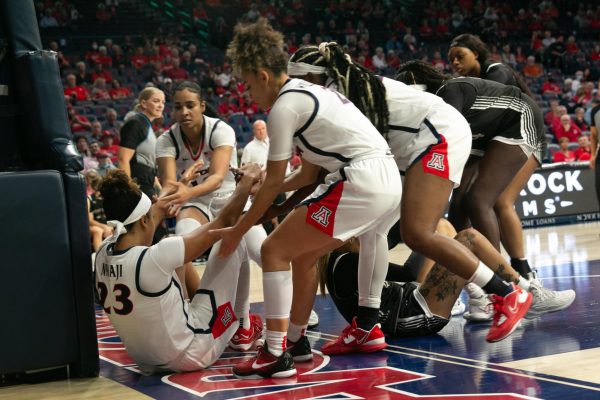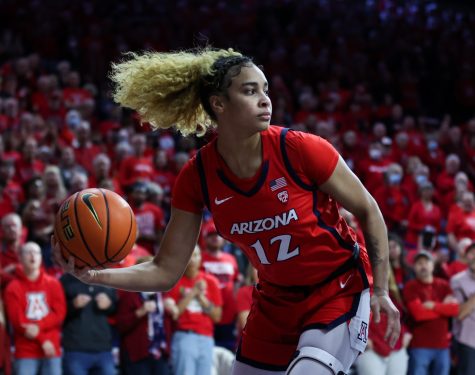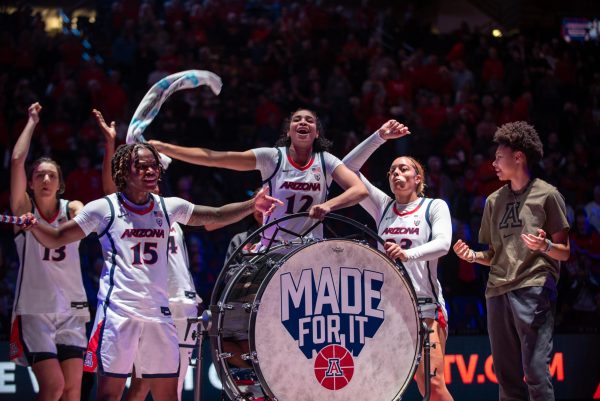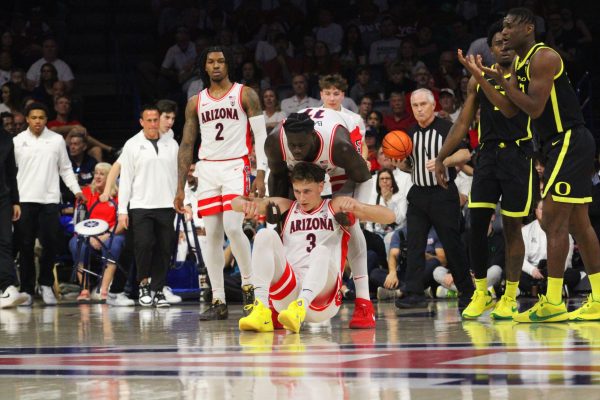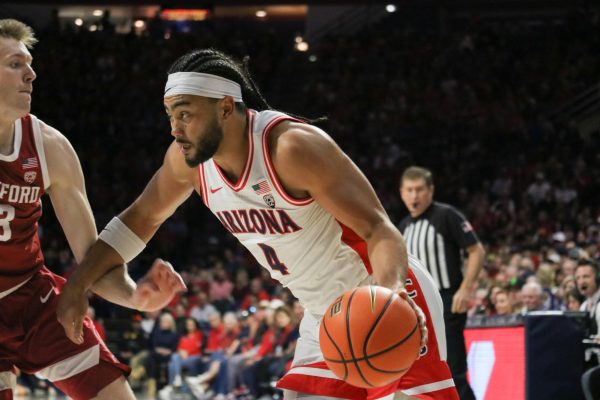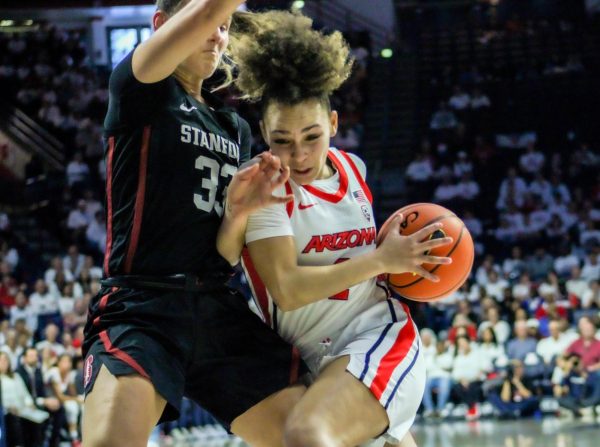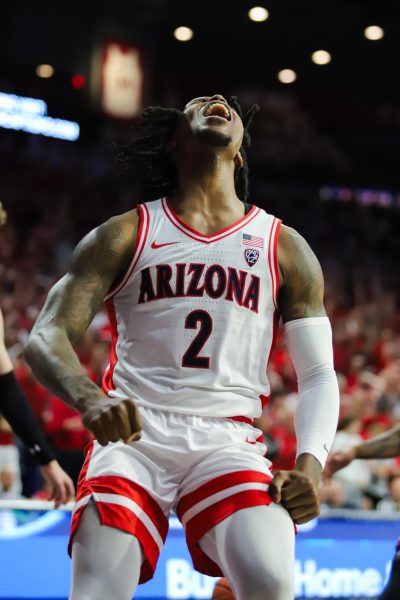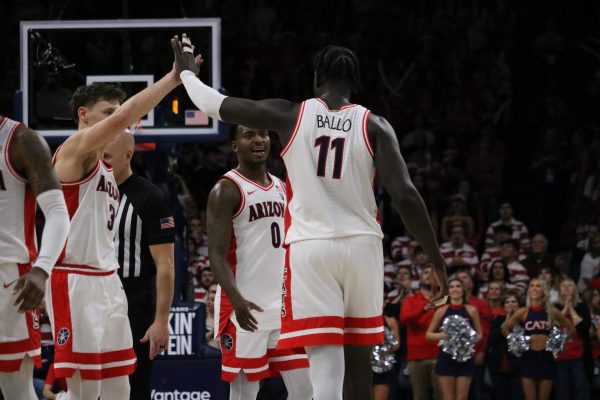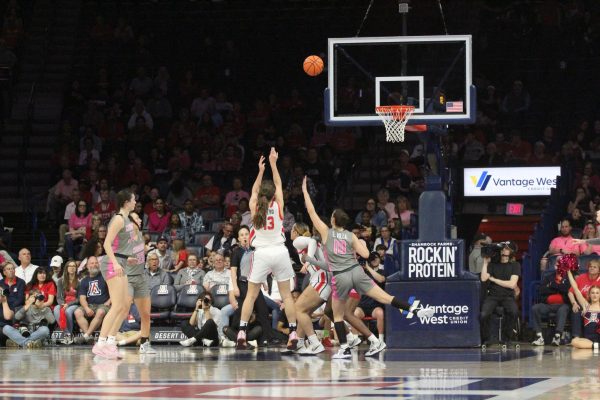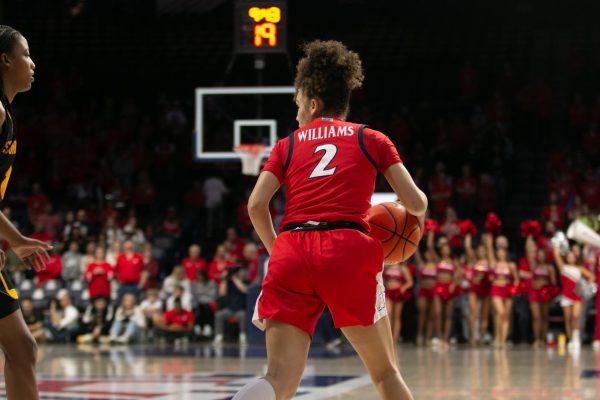OPINION: Why Sean Miller’s time in Arizona should be coming to an end soon
Arizona head coach Sean Miller.
March 3, 2021
Editors Note: This is the second part of our two-part series where we evaluate head coach Sean Miller during his time at Arizona. You can find the other part of this series here.
Head coach Sean Miller just finished his twelfth year as the head coach of the Arizona men’s basketball team and was 17-9 overall and 11-9 in Pac-12 games.
You might ask yourself: Why aren’t the Wildcats participating in the Pac-12 and NCAA March Madness tournaments this year? The answer is Sean Miller.
In October 2020, the men’s basketball program was served with nine allegations of misconduct, Level I allegations, and Miller was charged with lack of head coach control.
Former assistant coach Book Richardson told player agent Christian Dawkins that Miller paid former Arizona Wildcat Deandre Ayton $100,000 to commit and play for Arizona. The NCAA just wrapped up its investigation a few months ago and then Arizona self-imposed a postseason ban in an effort to minimize the potential punishment from the NCAA.
As the head coach, Sean Miller is fully responsible for the actions of any of his assistant coaches, even if he had a limited part or wasn’t involved in the problem at all.
Let’s get to the on-the-court problems. First of all, I don’t believe he is a great developer of talent. Just looking at the last two seasons, Nico Mannion, a member of the Wildcats 2019 recruiting class, was the No. 9 best player in his class when he came to Tucson. A year later, Mannion was selected No. 48 overall in the second round of the 2020 NBA Draft. But it is deeper than that, and let’s talk about how Miller used him at Arizona.
They ran very few pick and rolls and he was basically used in a “T.J. McConnell-like role” where he is a pass-first point guard, who cannot create his own shot. That is the total opposite of what we saw of him from his time in high school at Pinnacle High School.
Mannion excelled in pick-and-roll plays, creating more space on the floor for his teammates and allowing open jump shots to open up for him too. All of the blame doesn’t go on Miller because many factors go into a player developing and becoming an elite player, but the head coach plays a big role in a player’s development.
Yeah, every coach has players that don’t pan out, but Miller has way too many and it doesn’t stop with Mannion.
Ira Lee was a four-star prospect coming into the program and as a senior played limited minutes and wasn’t even in the rotation at many points of the season.
Rawle Alkins was the No. 21 best prospect in the country in the 2016 recruiting class and after playing two seasons for Miller, he went undrafted and later played one season in the G League for the Chicago Bulls.
Kobi Simmons was the No. 20 prospect in the country, the same year as Alkins, and played one year at Arizona before also going undrafted in the 2017 NBA Draft. He played 32 games his rookie season for the Memphis Grizzlies but hasn’t played another game since.
There are players that have had good years and careers at Arizona and made it to the NBA but there are very few. Saying, “Deandre Ayton was great at Arizona,” isn’t a valid argument because he was the No. 1 overall prospect in his recruiting class and was the consensus number one overall pick in the 2018 NBA Draft. He’s supposed to be good.
RELATED: OPINION: Arizona needs to give Sean Miller a contract extension
Also, for being a so-called “great recruiter,” it doesn’t look good that once the players get into your program, they look like a totally different player than the previous year.
That is exactly what happened with freshman Dalen Terry. He was a four-star recruit where he averaged 15 points, 8.9 assists and 8.8 rebounds per game at Hillcrest Prep in Phoenix, Arizona.
Terry’s shot didn’t fall consistently throughout his entire freshman season, but I believe it was because he was used the wrong way. Terry was a primary ball-handler in high-school and was used to the offense running through him. It is understandable when the ball gets taken out of your hands and your shot attempts decrease by over half the amount, it is expected.
Next part: in-game play-calling and late-game decisions. Two games come to mind when thinking of just this season when a game was either blown, or there was questionable play-calling involved. On Feb. 13, Arizona played the Oregon Ducks, and the game was tight from the very start, coming down to a tie game with 15 seconds left and the Wildcats in possession to sink the go-ahead bucket.
Arizona’s brilliant drawn-up play to win the game? Akinjo bringing the ball up the floor and dribbling at the top of the key until Oregon fouled him with 1.1 seconds left. Something that Miller said after the game made me think a lot to myself about the answer.
“I have to be better late in games,” Miller said.
After thinking, a question came to my mind to ask him, “How many years will it take to become a great coach late in games?”
He just finished up his twelfth season as the Wildcats men’s basketball head coach and doesn’t seem to be improving in the areas that he has struggled in since his first season.
How many years does it take to get better? Some coaches aren’t going to get to the Coach K, John Calipari, Roy Williams and Tom Izzo level and that is okay for most programs. But if you want your program to get to the next level and the so-called “mountain” Miller mentioned in his last press-conference, then someone else needs to be given an opportunity to change things and move in a different direction.
Miller has also had the same philosophy throughout his tenure in Tucson, which has been to try and get as many five-star players as he can get and make the best of it. Then this year, after missing out on a few five-star prospects last year, he brought in multiple players from overseas. His strategy has all of the sudden changed?
To win at a very high level, you have to establish a formula and stick by it for many years before winning at a high-level sometimes. Jay Wright is a great example, as it took him 15 years to reach an NCAA championship game and then ended up winning two National Championships at Villanova.
Follow Ryan Wohl on Twitter



